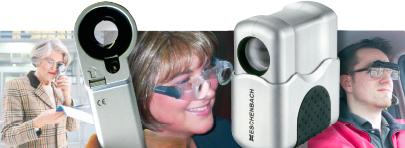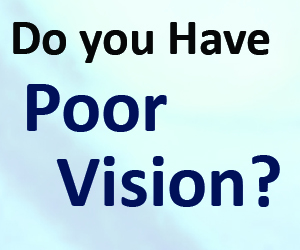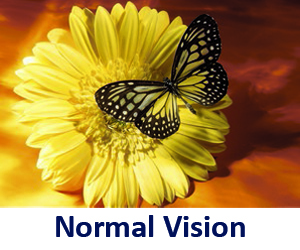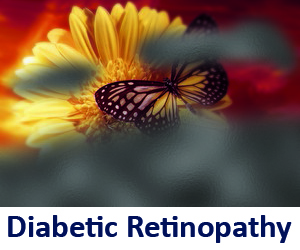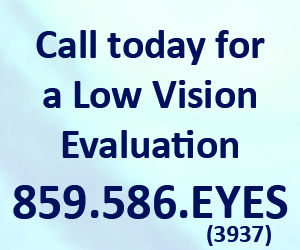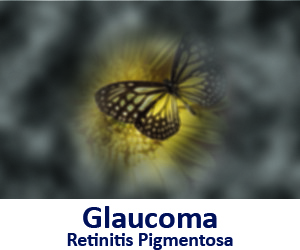
 More than 14 million Americans today struggle with Low Vision, which is simply defined as a partial loss of sight that can’t be corrected with eyeglasses, contacts, medication, or surgery. For patients suffering with low vision, often the simplest tasks seem impossible. Until recently, many low vision patients found themselves struggling with the fact that they could no longer perform essential activities such as reading a book or driving a car, while their world lost much of its color and vitality. But all of that is changing dramatically now, thanks to breakthroughs in the highly specialized field of low vision eye care.
More than 14 million Americans today struggle with Low Vision, which is simply defined as a partial loss of sight that can’t be corrected with eyeglasses, contacts, medication, or surgery. For patients suffering with low vision, often the simplest tasks seem impossible. Until recently, many low vision patients found themselves struggling with the fact that they could no longer perform essential activities such as reading a book or driving a car, while their world lost much of its color and vitality. But all of that is changing dramatically now, thanks to breakthroughs in the highly specialized field of low vision eye care.
Today, Primary Eye Care Associates is leading the way in low vision rehabilitation in Northern Kentucky. With professional expertise, specialized equipment and remarkable vision-enhancing tools, low vision patients are learning that they can dramatically improve the quality of their lives by improving the quality of their eyesight.
The Three Steps to Low Vision Rehabilitation
Primary Eye Care specializes in low vision rehabilitation and is state certified for low vision care. The benefits that our patients receive from our low vision aids and services include improved clarity of vision for reading and driving, more independence, and enhanced activities of daily living. This is achieved by way of a three step process of vision rehabilitation including:
1. Comprehensive Low Vision Exam:
The rehabilitation process begins with a comprehensive vision exam designed to measure visual acuity and diagnose any eye conditions such as glaucoma, macular degeneration or cataracts that may be contributing to low vision.
2. Prescribing Appropriate Aids:
Your doctor will custom-tailor a treatment program that carefully matches the most helpful vision aids to the patient’s personal goals.
3. Low Vision Training Program:
Implementing the new custom vision aids often requires some adjustment (and even some life-style change) on the part of the patient. Primary Eye Care’s low vision instructors will teach the patient the proper use, handling, and care of new equipment.

Low Vision Rehabilitation Programs
Dr. Blair works with all low vision conditions and has developed innovative programs specific to many common low vision problems. Our programs are designed to meet each patient’s particular vision problem, along with his or her personal goals for better vision. The following are among our most common rehabilitation programs.
Macular Degeneration Program
The great majority of low vision problems, especially among senior citizens, results from age-related macular degeneration (ARMD), in which the center of the field of vision grows increasingly dark. Our uniquely designed ARMD Low Vision Program includes the latest in custom designed vision aids along with dietary supplements, physical adaptation and education.
Program for Visually Impaired Diabetic Patients
One of the most debilitating effects of diabetes is the way it can harm vision. Many experience light and glare problems which may respond to special filters. Primary Eye Care Associates can provide diabetic patients with the latest vision aids aimed at getting the most out of the portion of the retina that remains healthy.
Bioptic Driving Program
This innovative Program is for those with good peripheral vision but mild loss of central vision. Bioptic Driving is a method of driving that utilizes the patients remaining good general vision in combination with the use of small bioptic telescopes mounted in their eye wear. Included in this program is the necessary training to become proficient in the skills needed to comfortably use a bioptic while driving.
Vision Loss from Stroke or Brain Surgery
Vision loss caused by trauma can result in multiple vision disorders including Homonymous hemianopsia, the loss of half of the visual field in both eyes. Our field loss patients have experienced success with the Gottlieb Visual Field Awareness System when combined with proper training on the use and care of the system.
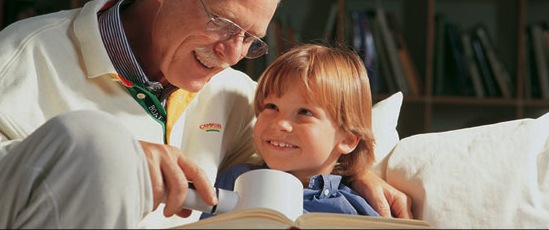
New Technologies for Low Vision Correction
Technology has improved the lives for many low-vision patients. Similar to the way a sophisticated hearing aid amplifies sound, low vision aids are designed to enhance sight. Solutions may include special eyeglasses, custom-designed optical devices, magnifiers, tints, filters or electronic systems.
V.E.S. Auto Focus
 The first auto-focus telescope system featuring powerful optics and a continuously clear image. The VES telescope fits right on your glasses and focuses automatically thanks to a computer-controlled, on board motor. The VES is deal for reading, schoolwork, or working from a computer screen.
The first auto-focus telescope system featuring powerful optics and a continuously clear image. The VES telescope fits right on your glasses and focuses automatically thanks to a computer-controlled, on board motor. The VES is deal for reading, schoolwork, or working from a computer screen.
Gottlieb Visual Field Awareness System
 The development of the Gottlieb Visual Field Awareness System has greatly improved our success rates in aiding patients after hemianoptic visual field loss. The Gottlieb shifts the image into the patient’s still functional field as the patient makes natural scanning movements.
The development of the Gottlieb Visual Field Awareness System has greatly improved our success rates in aiding patients after hemianoptic visual field loss. The Gottlieb shifts the image into the patient’s still functional field as the patient makes natural scanning movements.
Jordy CCTV system
 The Jordy is a wearable full color closed-circuit TV system that includes a camera and two LCD screens mounted in a headset providing dramatic improvements in distance vision for many profoundly impaired patients. It’s ideal for people with active lifestyles, enabling them to read, write, and enjoy TV, movies, and hobbies again.
The Jordy is a wearable full color closed-circuit TV system that includes a camera and two LCD screens mounted in a headset providing dramatic improvements in distance vision for many profoundly impaired patients. It’s ideal for people with active lifestyles, enabling them to read, write, and enjoy TV, movies, and hobbies again.
Bioptic Telescope
 Telescopes are used to help distance vision. They provide all the benefits of a telescoptic system while maintaining mobility.
Telescopes are used to help distance vision. They provide all the benefits of a telescoptic system while maintaining mobility.
ClearImage II Lens
 Unobtrusive and cosmetically appealing, the tiny but powerful microscope fits neatly into any eyeglass case.
Unobtrusive and cosmetically appealing, the tiny but powerful microscope fits neatly into any eyeglass case.
Feinbloom Type R Microscopic Bifocal
 A powerful Microscope for clear, crisp distortion-free field of view from edge to edge. Now available in lightweight metal frames, the Feinbloom Type R microscopic bifocal is unobtrusive and cosmetically appealing; the tiny but powerful microscope fits neatly into any eyeglass case.
A powerful Microscope for clear, crisp distortion-free field of view from edge to edge. Now available in lightweight metal frames, the Feinbloom Type R microscopic bifocal is unobtrusive and cosmetically appealing; the tiny but powerful microscope fits neatly into any eyeglass case.
Pico Handheld Video Magnifier
 This handy little device about the size of a pack of playing cards allows you to read grocery labels, restaurant menus and package instructions simply by placing the magnifier against the text. This instantly enlarges the text in color or black and white on an easy-to-read electronic screen.
This handy little device about the size of a pack of playing cards allows you to read grocery labels, restaurant menus and package instructions simply by placing the magnifier against the text. This instantly enlarges the text in color or black and white on an easy-to-read electronic screen.
Merlin
 The Merlin is a full-color, auto-focus, desktop video magnifier. It enables people with low vision to read, write, view photos, enjoy crafts, hobbies and much more. Designed for the student, older adult and working professional, Merlin enables you to regain visual independence.
The Merlin is a full-color, auto-focus, desktop video magnifier. It enables people with low vision to read, write, view photos, enjoy crafts, hobbies and much more. Designed for the student, older adult and working professional, Merlin enables you to regain visual independence.
